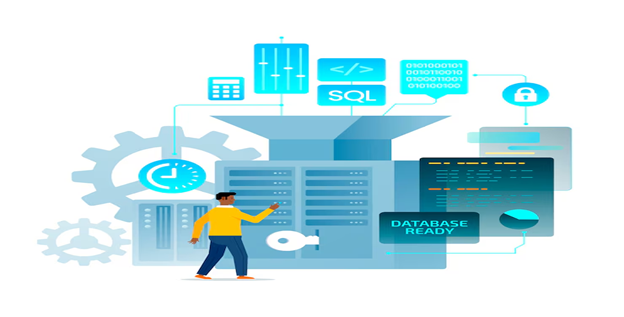RICEFW in SAP | Reports, Interfaces, Conversions, & Workflows

The essence of SAP customization; a lifeline or backbone called RICEFW, allows various businesses to modify the system to their peculiar requirements. Enhancing the efficiency of business processes and filling functional gaps, RICEFW assists with anything from workflow automation to data integration to custom reporting. Thus, understanding the components will carry out a successful SAP implementation.

What is RICEFW in SAP?
RICEFW full form denoting Reports, Interfaces, Conversions, Enhancements, Forms, and Workflow. It is described as an essential aspect of SAP custom development within the overall domain of RICE. These aspects are pertinent to adopting SAP solutions for specific business requirements.
- Reports are used for data extraction, followed by analysis.
- Interfaces allow the communication between SAP and external systems.
- Conversions involve the transfer of legacy data into SAP.
- Enhancements change the standard functionalities of SAP.
- Forms are used to generate business documents in a structured manner.
- Workflows are used for automating business processes.
RICEFW is an integral part of SAP implementation in achieving seamless integration and business productivity.
Why is RICEFW important in SAP implementation?
RICEFW is an inseparable part of SAP implementation ensuring customization between standard SAP functionality and business requirements, bridging the gap. It provides a structured approach to managing Reports, Interfaces, Conversions, Enhancements, Forms, and Workflows, allowing for increased system performance, user convenience, project risks, and smooth execution.
Understanding the Components of RICEFW
RICEFW in SAP includes the following elements, each of which is essential for customizing and optimizing SAP systems effectively:
Reports (R)
In the RICEFW, reports are essential to extracting and presenting structured SAP data. They help businesses analyze information beyond standard SAP reports like COOIS and MD04.
Types of Reports:
- Standard Reports: These are reports that are pre-defined in SAP (like MD04 for material planning).
- Custom Reports: These reports are developed using ABAP, following specific business needs.
Essential Benefits:
- Leverages crucial business insight.
- Assists in the decision-making process.
- Bridges the gap left by standard reports.

Interfaces (I)
The RICEFW interfaces permit data and unencumbered passage between SAP entities and external systems or other SAP modules to maintain smooth communication and business integration.
How Interfaces Work:
- Inbound Interfaces: It changes data in SAP (i.e., planned requirements from external planning tools) and is termed inbound Interfaces.
- Outbound Interfaces: Here, data sent out of SAP (i.e., delivery details to logistics providers) is termed outbound Interfaces.
Key Technologies Used:
- IDocs (Intermediate Documents)
- ALE (Application Link Enabling)
- EDI (Electronic Data Interchange)
Conversions (C)
Conversion (C) in RICEFW typically involves migrating data from sophisticated sources like legacy systems or older SAP versions and plugging it into a completely new SAP system. The accuracy, transformation, and data compatibility are possible using any one of the following tools: LSMW or BAPI.
Key Aspects of Conversion:
- Transform data into formats compatible with SAP.
- Maintain integrity in data completeness during migration.
- Enable smooth SAP Installations, Upgrades, Mergers, etc.
Typical Use Cases:
- Moving customer records from an old CRM application.
- Loading historical financial data into SAP FICO.
Enhancements (E)
Enhancements (E) in RICEFW allow businesses to extend or modify SAP’s standard functionalities when they do not fully meet operational needs. These enhancements ensure customization without altering SAP core code, using tools like BADIs, enhancement frameworks, and user exits.
Key Use Cases:
- Adding custom fields to SAP screens.
- Restricting goods receipt until goods are issued.
- Enhancing RF capabilities at the Inventory Management level.
Common Tools Used:
- BADIs (Business Add-Ins)
- User Exits
- Enhancement Frameworks
Forms (F)
Forms in RICEFW refer to electronic or printed documents created from the SAP system, like invoices, purchase orders, or shipment documents, and are intended to yield structured and professional output for business transactions.
Purpose of Forms:
- Generate invoices, payment advice, and order confirmations for customers or vendors.
- Comply with legislative and business formatting requirements.
- Layout customization through SAP Smart Forms and SAP Scripts.
Key Tools for Form Development:
- SAP Smart Forms: New-generation tool for dynamic forms.
- SAP Script: Older but used in legacy systems.

Workflows (W)
Workflow in RICEFW integrates document routing in SAP, triggers events, and sends notifications. They also increase efficiency by eliminating manual processes and ensuring timely approvals.
Functions for Workflows:
- Automate approval processes (e.g., purchase order approvals)
- Trigger notifications (e.g., alerts when experiencing quality inspection failure)
- Streamline business operations across departments.
Tools:
- SAP Workflow Engine
- Fiori Workflow Apps
How RICEFW is Used in SAP Projects
RICEFW customizes the SAP ABAP code, keeping it viable for all SAP projects. It allows you to differentiate standard SAP functions not catered for development.

Identify Business Requirement
- Functional and technical consultants will note business requirements during the modeling and session development.
- Workshops, interviews, and sessions assist in requirement gathering.
- Gap analysis determines the deficiencies of SAP standard functionalities.
Classifying Custom Developments
- Each customized development account falls under Reports, Interfaces, Conversions, Enhancements, Forms, and Workflows (RICEFW).
- The classification enables better planning, development, and testing.
Using RICEFW in SAP ABAP, businesses can realize all workflows aligned in greater synergy, smoother interfaces, and enhanced functional capabilities, collectively forming an extensive SAP solution.
Conclusion on RICEFW in SAP
RICEFW, i.e., reports, interfaces, conversions, enhancements, forms, and workflows, comprehends the success of SAP implementation. It will bring customized integration and automation to processes, filling the voids that standard SAP functionalities may leave. RICEFW in SAP thus facilitates workflow optimization and efficiency enhancement by customizing systems to meet the specific operational business needs



Connect with Cloudbook to get SAP solutions that match your unique needs.
